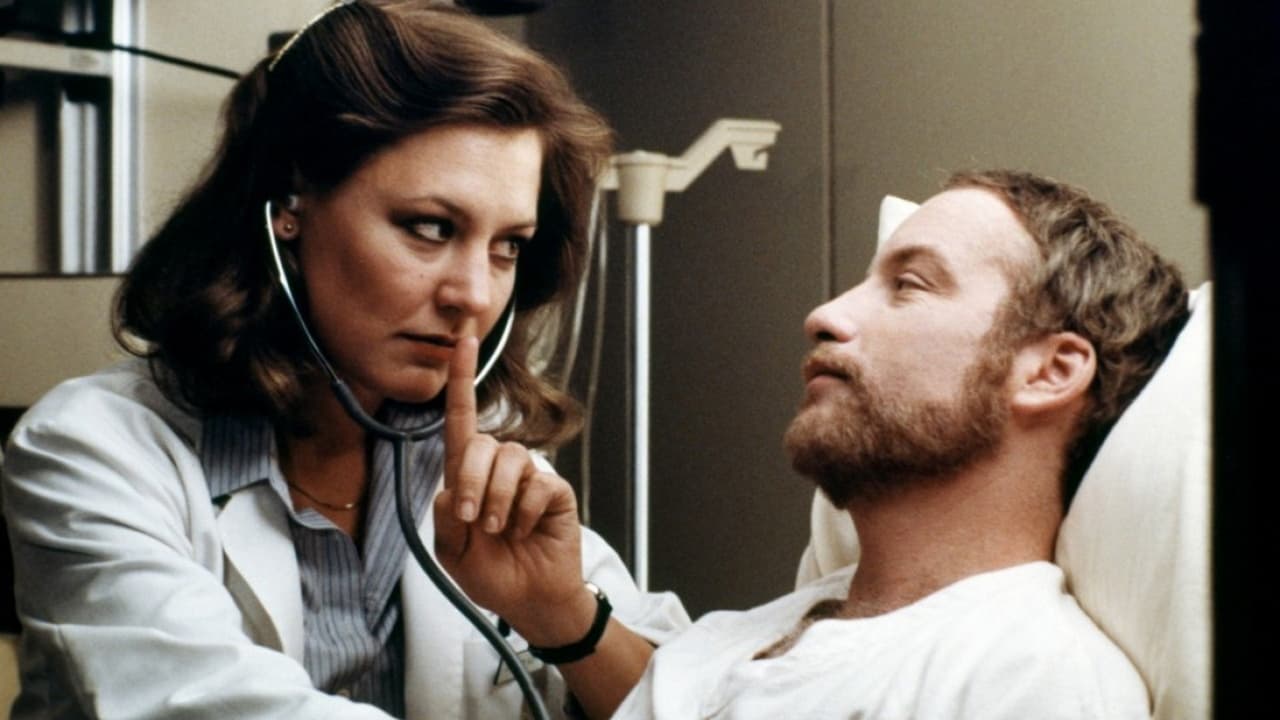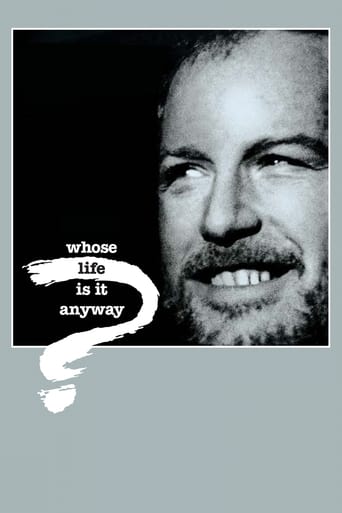

Expected more
... View MoreDon't listen to the Hype. It's awful
... View MoreA bit overrated, but still an amazing film
... View MoreThe film makes a home in your brain and the only cure is to see it again.
... View MoreSane people can have the desire to die, it's an indisputable fact. In arguing why, "Whose Life Is It Anyway?" tries to balance a dispute so personal, that it seems bound to fail. And yet, it does not! The story features a sculptor who is left paralyzed after a wrecking car accident and ends up in a most undesirable situation. His status renders him incapable of being the person he once was and found in the impossibility to reconcile his former self with his current condition, Ken Harrison decides to die.His quest is, most obviously, a difficult one. The doctors do not support him in his decision and in this debate - doctor::patient - it is where the film conjures the most solid arguments in its plea. Going beyond the usual ethical components of this choice, the film manages to assert a very personal position to the main protagonist, which therefore makes the whole experience one of anguish on a very personal level. And this is where it makes its point: there is no universal justification for death and the world has no right to interfere in the sphere of anyone's consciousness. Perhaps it is at times overly dramatic and it treats the subject with tantalizing care, but in the end, I felt the film balanced all the facts concerned in a convincing and compelling way, vividly portraying the painful demise of a strong mind in face of the cruelty of destiny. It might seem to take a stance on every man's right to choose his fate, but in the matter at hand (whether death by will is right or wrong) it emits no absolute messages.Beyond everything, Richard Dreyfuss sustains an authentic feeling of intellectual pain, in his convincing performance. And it is only in pain and suffering that we can look into ourselves to understand how much we are willing to bear in this world and what makes us be. Suicide I do not believe a solution, but then again, I am on the other side of the river, where things seem filthy green, rather than nothing at all. We are so alone in death and pain, that nobody can truly claim to understand us.
... View MoreThis film could have been great, except for some serious scripting and characterization problems. Many of the characters are stereotypical, wafer-thin portrayals, particularly the head doctor who wants to keep Dreyfuss's character alive. The "party scene in the hospital basement" is not only cliched, but nobody got fired or got in trouble (the Jamaican nurse in particular) for smoking dope in a hospital, and taking a quadraplegic patient out of their bed without permission in the middle of the night? Give me a break! Finally, Dreyfuss's decision to "remain in the hospital to die" at the end... the judge's ruling was specifically that he be released (writ of Habeus Corpus), not that he be allowed to die without treatment in the hospital!These serious problems (particularly the latter, where he decides to stay in the hospital) just about ruin the film for me. Never mind that there's never much of a real sense of suspense or genuine emotion here, and everything plays far too liberally off (melo)drama generated by the Dreyfuss character's decision. I'll give it 6/10, and I feel like I'm being generous. Comes dangerously close to trivializing the issues portrayed in the film, and occasionally crosses the line... if it weren't for much more honest films with subject matter just as difficult (like "Dead Man Walking") I might be more forgiving and just chalk it up to the best Hollywood can do with this sort of material, but I know better.
... View MoreThis film may well deal with a taboo area of medicine which of course is patients control over their own death. The film deals with a very morbid subject area without descending into difficult viewing.Richard Dreyfuss's delivers a continum of comedy while not betraying the feeling of hopelessness felt by his character. Other than great dialogue and acting the film leaves the viewer questioning common sense notions of the rightieusness (probably spelt wrong sorry) of medical professionals as well as acknowledging the reality that the institution of medicine is a new religion that dictates its own values on the less powerful subjects in its claws (claws is too much isn't it). Great film!!!
... View MoreThis film is simply as close to perfect as I'd ever want a movie to be. The entire cast is impeccable. Even Khaki Hunter (the Porky's movies) gives a wonderful performance.Richard Dreyfuss is amazing. He gives his most complete performance while only able to use his head. Bob Balaban, as a stuttering attorney is amusing. Christine Lahti and Janet Eilber make you want to cry. The only thing wrong with this movie is that it had an ending. It didn't need one. We could have been left to ponder the enormous question, right along with the judge, as the credits rolled.
... View More